Welcome to the Perón era. With only four projects built in the previous 20 years, no doubt a housing crisis for lower income workers affected Buenos Aires… and provided good enough reason to eliminate the CNCB. Perón’s support came from the working class, so it’s not surprising that he began to cater to their needs.
Land which bordered an industrial zone a few blocks south of the CCM-built Barrio Varela-Bonorino received 6 apartment buildings with 18 units each, for a total of 108 new homes. What’s interesting is the style… or rather the lack of it: rectangular blocks with very little ornamentation. It’s obviously quick, easy, & inexpensive to build but very different for the late 1940’s cityscape. Here’s the before & after (images captured from the city government’s map website):
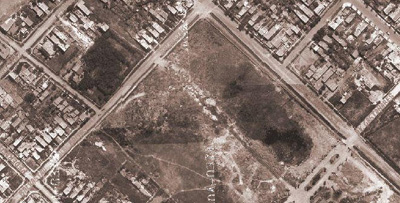
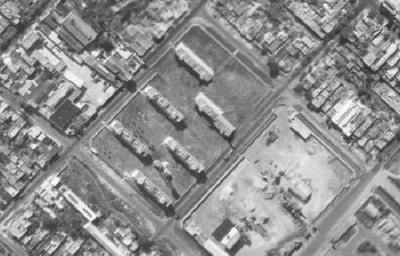
Although it looks decent enough from the aerial shots, the vicinity seems a bit desolate today. This is really the Buenos Aires that few people see. Each building has 3 stories, & from first glance I thought there was zero attempt at decoration. Plain, flat façades with holes for windows:
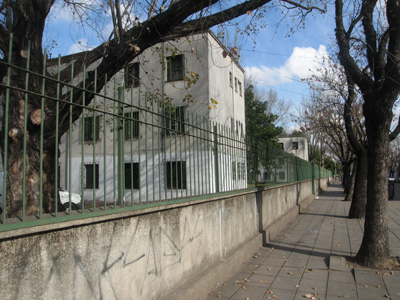
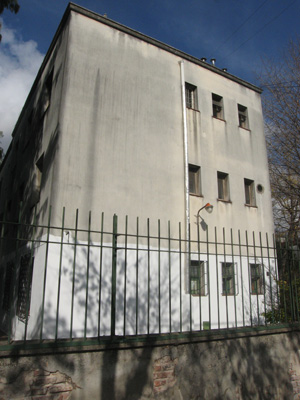
Numbers mark each cookie cutter building:
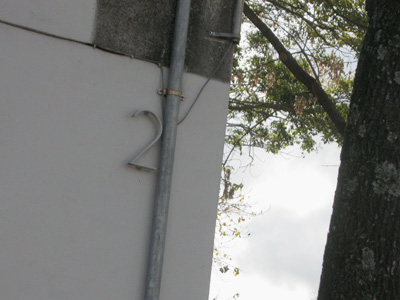
Since the fence doesn’t go around the entire perimeter of the complex, vast open spaces can be appreciated. I’m sure the trees look great in summer, but the lack of grass is a bit depressing. This is probably the soccer field on the weekends:
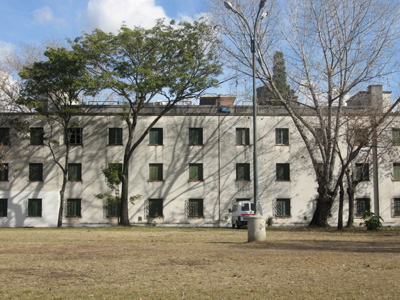
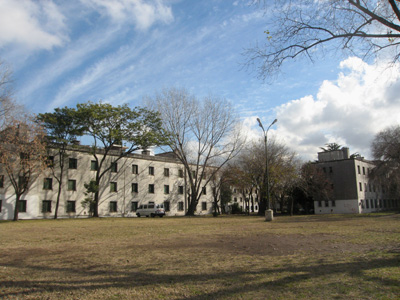
A large water tower is used like in the Barrio Rawson:
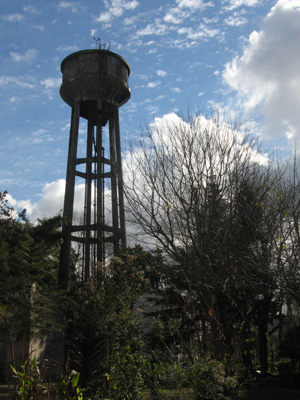
After walking around the entire block, the northeastern façade finally showed some promise. Balconies, most of them covered by residents, added a little decoration as did the stairwells. Granted, it’s not much but it beats living in a concrete cell. In fact, it reminds me of some of the apartment complexes I knew as a kid in Memphis:
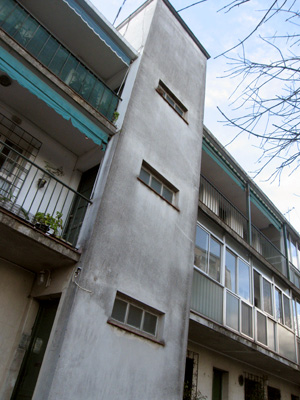
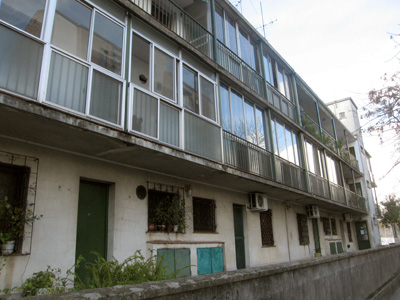
Obviously less concerned about design than in earlier projects, it will be interesting to see how the rest of the Perón era buildings look. I’m itching to finish this series before I leave for Australia!
Update (29 Jan 2011): The impressive Inventario de Patrimonio Urbano series states that via new laws during the Perón era, government housing projects were transferred to the Banco Hipotecario Nacional. The BHN not only controlled mortgages but also managed construction of new complexes like Barrio Balbastro. By making construction affordable & building as many new units as possible, they thought the housing crisis would be overcome. The city donated the land but the Union Obrera de Empleados Municipales worked as the intermediary to house people after the project was complete.
While nothing like Cabrini-Green, that idea was on its way…
Direct link → Master list of all Housing for the Masses posts.
